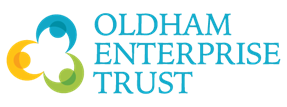2021/22 Tax Changes Sole Traders Need To Know
If sole traders want to prepare for the 2021/22 tax year, they need look no further than Rishi Sunak’s much-talked-about Budget. In it, the Chancellor promised to do whatever it takes to protect jobs and livelihoods, and outlined how the government intends to support the self-employed.
To save you the trouble of researching each change, we’ve asked Mike Parkes from GoSimpleTax an Oldham based business, to list the three big updates and explain how they might affect you.
Additional COVID-19 support
Both the Coronavirus Job Support Scheme (or furlough scheme) and the Self-Employment Income Support Scheme (SEISS) are set to be extended until September 2021. There will be two remaining SEISS grants, amounting to five grants in total.
The fourth will cover February 2021 to April 2021 and, provided you filed your 2019/20 tax return before midnight on the 2nd March (and meet similar criteria as the previous rounds of funding), you’re eligible. It’ll also be open to those who became self-employed in the 2019/20 tax year. This means that around 600,000 more people are now entitled to 80% of their average trading profits.
As for the fifth grant, there’s little confirmed yet. However, we do know it’ll cover a maximum of £7,500 and that the eligibility factors will be slightly different. Instead of focusing purely on net profit, the government will be reviewing a sole trader’s drop in turnover as well.
Our expectation is that only sole traders whose turnover has fallen more than 30% will receive the full allowance (80% of 3 months’ average trading profits). If your turnover has fallen by less than 30%, your grant will be capped at £2,850.
Income Tax thresholds to change, then freeze
The Personal Allowance will increase by £70 from £12,500 to £12,570 in April 2021. This will then be frozen until 2026 – a decision that is expected to drag 1.3 million people into paying tax as inflation increases wages and the cost of services.
Similarly, the higher-rate tax threshold (of 40% on taxable income) will increase from £50,001 to £50,270 and then be frozen. One million people are now expected to fall into the higher bracket by 2026.
These aren’t the only rates to freeze. The pension Lifetime Allowance will remain at £1,073,100 until 2026. This isn’t to be confused with the pension Annual Allowance of £40,000, which has seen no changes.
The reason for all these freezes is undoubtedly to claw back some of the money spent on COVID-19 relief. If you’re worried about teetering into a higher tax band in the next five years, it’s important to plan ahead and prepare for a change in your take-home pay.
HMRC to invest in a new taskforce
If your strategy to avoid falling into a higher bracket involves not disclosing your total income, I’d advise you reconsider! A substantial section of the Chancellor’s Budget announcement was dedicated to the new Taxpayer Protection Taskforce.
£100m will be spent on a team of investigators who will combat fraudulent claims on taxpayer money – including those who have exploited COVID-19 support schemes.
Realistically, this is unlikely to target sole traders, as the most likely abusers of COVID-19 relief will be businesses. However, it is worth recognising the level of investment that HMRC is putting into tax avoidance and fraud.
It remains to be seen whether or not this taskforce will investigate the much larger problem of pension scams, that have cost the UK taxpayer over £30m since 2017. Likewise, there was no confirmation as to whether this group will target the rampant COVID-19 vaccine scams that have been targeting people for months now.
Above all, I urge sole traders to keep their eye on the latest changes to legislation as much as they can. Filing your 2020/21 tax return as soon as possible can also help to ensure you’re eligible for upcoming grants or forms of support.
About GoSimpleTax
Income, expenses and tax submission all in one. GoSimpleTax will provide you with tips that could save you money on allowances and expenses you might have missed.
The software submits directly to HMRC and is the solution for the self-employed, sole traders and anyone with income outside of PAYE to file their self-assessment giving hints and tips on savings along the way. GoSimpleTax does all the calculations for you so there is no need for an accountant. Available on desktop or mobile application.
Try for free – Add up to five income and expense transactions per month and see your tax liability in real time – at no cost to you. Pay only when you are ready to submit or use other key features such as receipt uploading and HMRC direct submission.
